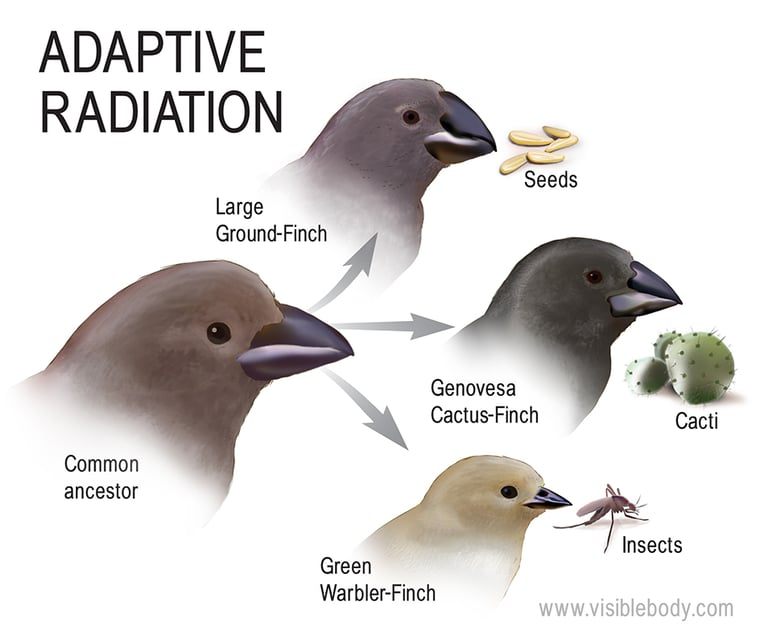House finch genetic adaptation has become a critical focus in the study of evolutionary biology, particularly as groundbreaking research sheds light on how these small birds have developed resilience against certain diseases. Recent pangenomic studies have unveiled significant structural changes within the house finch DNA, highlighting a remarkable DNA flip that enhances their resistance to pathogens. This innovative approach in genetic adaptation research allows scientists to analyze a broader spectrum of genetic information, moving beyond the limitations of traditional single-base pair analysis. By examining the evolutionary mechanisms underlying disease resistance in house finches, researchers have gained valuable insights into how these birds have historically adapted to survive in the wild. Ultimately, understanding these genetic adaptations may not only inform the study of house finches but also provide a broader perspective on how other species, including humans, could evolve in response to emerging diseases.
The evolutionary processes exhibited by the house finch offer an intriguing view into the realms of genetic evolution and adaptability. This common bird serves as an excellent model for investigating how species evolve defenses against infectious threats. Recent studies have spotlighted the structural variations in house finch DNA as a response mechanism to environmental stressors, emphasizing the importance of genetic adaptation in natural populations. Through innovative pangenomic methodologies, scientists can now appreciate the complexity of genetic shifts that contribute to survival and disease resilience. This research not only advances our understanding of avian biology but also highlights the intricate links between genetics, ecology, and evolution.
Understanding Genetic Adaptation in House Finches
Genetic adaptation is a focal point in evolutionary biology, showcasing how organisms evolve in response to environmental pressures. The house finch, a common species often found in urban and suburban settings, serves as an exemplary model for understanding these adaptations. Recent studies, particularly the pangenomic research conducted by Bohao Fang, have illuminated how specific genetic changes can enhance disease resistance in these birds. By examining the house finch’s DNA over an extended period, researchers have discovered significant inversions that confer a selective advantage against pathogens.
The implications of such findings extend beyond the house finch, providing insights into the broader mechanisms of genetic adaptation across species. These adaptations exemplify how natural selection can favor traits that increase survival, particularly in the face of emerging diseases. Understanding these processes through a pangenomic lens not only highlights the intricacies of house finch DNA but also reinforces the importance of considering structural variations when studying evolution.
Frequently Asked Questions
What are the key findings from the house finch genetic adaptation study?
The groundbreaking pangenomic study on house finch genetic adaptation revealed a significant DNA inversion that enhances disease resistance in these birds. This structural variation, existing for millions of years, suggests a natural evolutionary response to pathogens, offering insights into disease resistance and adaptation patterns.
How does genetic adaptation in house finches contribute to our understanding of evolutionary biology?
House finch genetic adaptation serves as a vital case study in evolutionary biology, illustrating how species can develop resistance to diseases through natural selection. The pangenomic approach utilized in the study allows for a broader understanding of genetic variation, enhancing our knowledge of evolutionary processes in various species.
What role does pangenomic study play in understanding house finch DNA?
The pangenomic study of house finch DNA provides a comprehensive overview of genetic adaptation by analyzing a vast pool of genetic information rather than focusing on isolated genes. This method identifies large-scale structural variations that are crucial for understanding how house finches have evolved to resist diseases.
How does the house finch’s genetic adaptation relate to disease resistance?
The house finch’s genetic adaptation is linked to its remarkable ability to resist certain diseases, highlighted by the study’s discovery of a DNA inversion. This adaptation exemplifies how genetic changes enable a species to combat health threats, offering a model for understanding disease resistance mechanisms in other species, including humans.
What can we learn about how evolving species respond to new diseases through house finch genetic adaptation?
House finch genetic adaptation provides a real-life example of how species can evolve in response to novel pathogens. The study reveals that through structural DNA changes, house finches developed immunity over time, which can inform our understanding of adaptive evolution in response to infectious diseases in both wildlife and humans.
Why is the house finch an ideal model for studying evolutionary adaptations?
The house finch is an ideal model for studying evolutionary adaptations due to its well-documented genetic history and response to diseases like conjunctivitis. The availability of historical house finch DNA samples enhanced the pangenomic study, allowing researchers to explore how this species adapted genetically to changing environmental pressures and pathogens.
| Key Points | Details |
|---|---|
| Research Focus | House finch resilience to diseases through genetic adaptation. |
| Study Methodology | Utilization of advanced sequencing and pangenomic analysis for comprehensive genetic insights. |
| Findings | Discovery of a major DNA inversion contributing to disease resistance. |
| Evolutionary Implications | The study helps illustrate natural resistance mechanisms in wild populations. |
| Future Directions | Potential applications in understanding genetic responses to pathogens in various species. |
Summary
House finch genetic adaptation highlights an incredible evolutionary response to diseases. The groundbreaking research conducted on the house finch revealed significant insights into how structural DNA changes contribute to the bird’s resistance against infections. Through advanced pangenomic methods, researchers uncovered a DNA inversion that illustrates the species’ adaptability to environmental challenges, which may inform future studies on genetic resistance across various animals, including humans.
